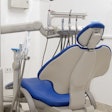
There is currently an expanding consolidation market for private equity and new group practice purchasers. While private practice ownership has declined, group practice affiliation has risen.
 Dan Croft.
Dan Croft.As of 2019, 10% of dentists were associated with dental service organizations (DSOs), according to the ADA's Health Policy Institute Database reported in 2021. Of this group, 20.4% were dentists between the ages of 21 to 34. The younger generation's interest in the group practice model is expected to continue to grow due to the strong performance of dental practices during COVID-19 surges and a huge increase in patient demand that can outpace pre-pandemic production levels.
However, although there is increased interest in the group practice model, there are important pitfalls dentists need to avoid to ensure they have the capital available to successfully grow their group practice at the rate they desire.
Pitfall No. 1: Not being aware of your bank's lending limits
Most entrepreneurial dentists have historically gone to another bank when they run out of runway with their current bank partners. However, emerging group practice owners will reach a major inflection point with all of their existing banking relationships, which could be at $5 million or $25 million in total debt or ownership or five or 15 locations, since all banks have certain lending caps that limit their ability to continue to lend. The question is not if but when banking partners will no longer be able to approve more practice acquisitions or startups.
A few other pitfalls dentists will encounter when they have multiple loans with several banks include prepayment penalties with each separate bank on all existing practice locations and establishing a new practice acquisition or startup that will not cash flow on a standalone basis, only on a consolidated basis.
This is why prior to planning to build or acquire additional locations, it is crucial that dentists speak with their bankers to understand their bank's debt ceiling, because it will not only impact the practice's ability to grow, but it could also potentially result in financial penalties, which impact the practice's profitability.
Another major challenge that is often not considered by most private group practices is how fast they want to grow versus the track record of their acquisition model, cash flow, leverage, onboarding, and the comfort level of their bank(s) in approving acquired multiple new locations every year for the next five years.
It's important for dentists to understand their bank's key performance indicators and how they define them to ensure they can meet the requirements and secure the additional funding they desire. These are conversations dentists need to have early with their financial institution as they build out their business strategies, so they have a clear understanding of the bank's debt ceiling and performance expectations.
"Running a multilocation dental group practice, it was important to choose a financial partner that is able to help scale my business without diluting our personalized and exceptional dental care services," said Dr. Narducci.
"It's very important to have a relationship with a long-term lending partner that you trust as you build your business," Narducci added. "Financing is better than private equity, because raising funds through selling to private equity opens the door for them to force the practice to cut costs that could lower the quality of care to patients. Financing allows you the freedom to do right by your patients while helping to successfully grow your practices."
Pitfall No. 2: Not knowing that financial covenants and reporting requirements expand as group practices acquire additional locations
As the group practice continues to expand, dentists will often outgrow the runway with their existing bank partners and enter the next phase of financing: moving from a small business to the lower middle market lending arena. As loan exposures and perceived bank risk continue to escalate, new financial covenants and lending hurdles will be required, which can include the following:
- Minimum consolidated earnings before interest, taxes, depreciation, and amortization (EBITDA) margins (profitability)
- Maximum of practice acquisition EBITDA multiples (business valuations)
- Maximum leverage ratio (debt to EBITDA)
In addition, more robust and sophisticated quarterly and annual reporting requirements will be required, such as moving from cash to accrual accounting, progressing from reviewed to audited financials, and needing to provide stronger quality of earnings reports.
In order to continue to expand these larger relationships, lenders will look for the key essentials of a good performance track record, solid business plan, reasonable growth strategy, high quality financial reporting, and the ability to consistently execute and meet performance expectations every year. However, it is equally important for group practice owners and their management team to interview long-term lending partners with industry expertise to educate themselves about how to avoid these pitfalls and ensure the ability to continue to work and partner together to finance the practice's growth.
Dan Croft has been the head of TD Bank's Healthcare Practice Solutions Group since 2014. In this role, he is responsible for overseeing and growing TD Bank's healthcare practice finance business, which assists dentists, veterinarians, optometrists, physicians, and podiatrists in choosing sound financial solutions for their practices. Dan has more than 25 years of experience.
The comments and observations expressed herein do not necessarily reflect the opinions of DrBicuspid.com, nor should they be construed as an endorsement or admonishment of any particular idea, vendor, or organization.



















